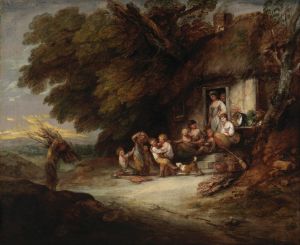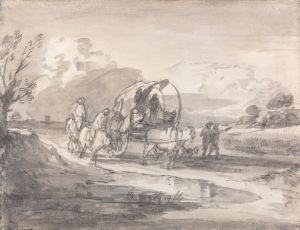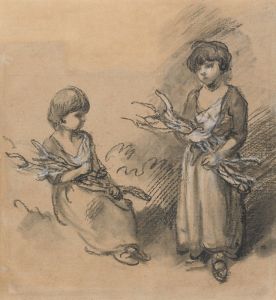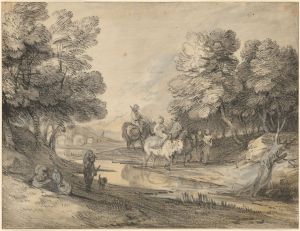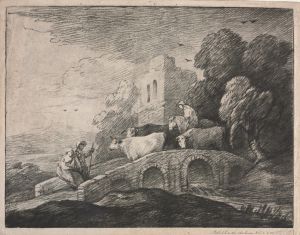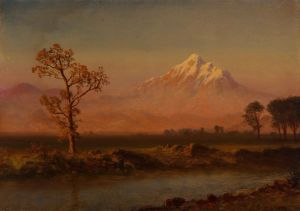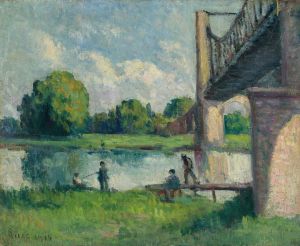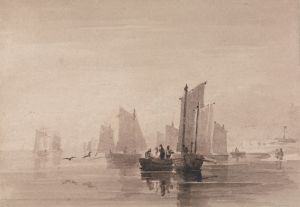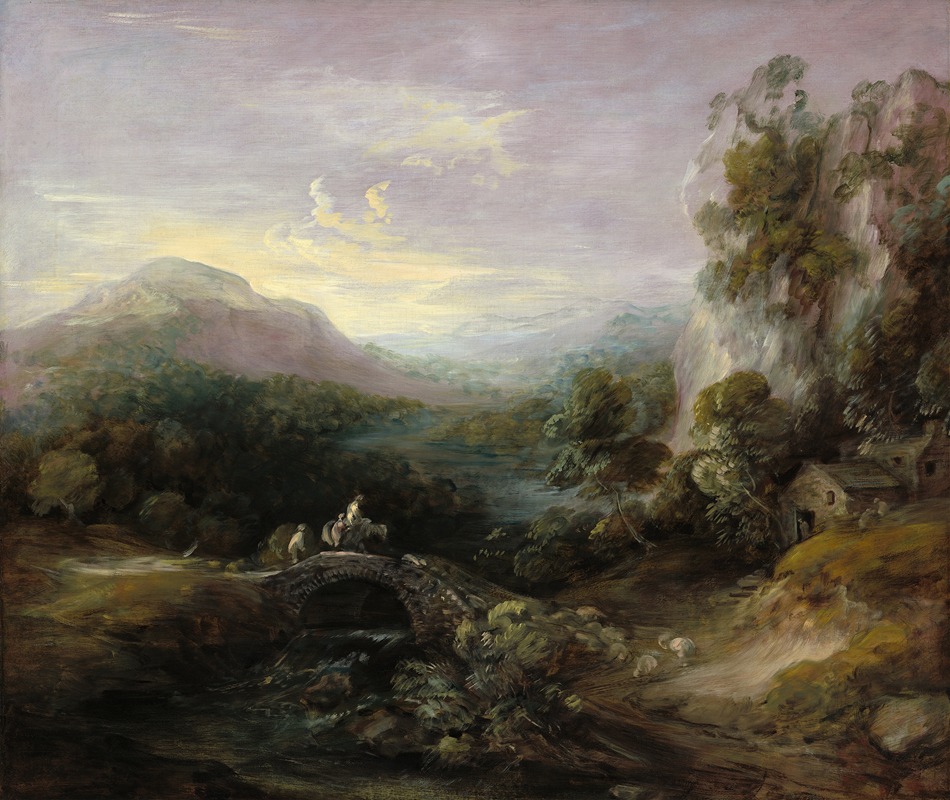
Mountain Landscape with Bridge
A hand-painted replica of Thomas Gainsborough’s masterpiece Mountain Landscape with Bridge, meticulously crafted by professional artists to capture the true essence of the original. Each piece is created with museum-quality canvas and rare mineral pigments, carefully painted by experienced artists with delicate brushstrokes and rich, layered colors to perfectly recreate the texture of the original artwork. Unlike machine-printed reproductions, this hand-painted version brings the painting to life, infused with the artist’s emotions and skill in every stroke. Whether for personal collection or home decoration, it instantly elevates the artistic atmosphere of any space.
Thomas Gainsborough's "Mountain Landscape with Bridge" is a notable example of the artist's landscape painting, showcasing his skill in capturing the natural beauty and atmospheric qualities of the countryside. Gainsborough, an 18th-century English painter, is renowned for his portraits and landscapes, and his work in the latter genre often reflects his deep appreciation for nature and his innovative approach to composition and technique.
"Mountain Landscape with Bridge" is believed to have been painted during the mid to late 18th century, a period when Gainsborough was actively exploring landscape painting alongside his successful portraiture career. The painting features a serene and picturesque scene, with a bridge serving as a focal point amidst a mountainous backdrop. The composition is characterized by its harmonious balance and the subtle interplay of light and shadow, which are hallmarks of Gainsborough's landscape work.
Gainsborough's landscapes are often noted for their poetic and idyllic qualities, and "Mountain Landscape with Bridge" is no exception. The painting captures a tranquil moment in nature, inviting viewers to immerse themselves in the serene environment. The bridge, a central element in the composition, not only serves as a structural feature but also symbolizes a connection between different parts of the landscape, guiding the viewer's eye through the scene.
The artist's technique in this painting reflects his mastery of color and brushwork. Gainsborough employed a loose and fluid style, using soft, blended strokes to create a sense of movement and atmosphere. This approach allows the viewer to experience the landscape as a living, breathing entity, rather than a static representation. The use of color is particularly noteworthy, with Gainsborough employing a palette that captures the natural hues of the landscape, from the earthy tones of the ground to the varied greens of the foliage and the soft blues of the sky.
Gainsborough's landscapes were influenced by the works of earlier artists, such as Claude Lorrain and Peter Paul Rubens, whose depictions of nature and use of light and composition left a lasting impact on his style. However, Gainsborough's landscapes are distinct in their emphasis on mood and emotion, often evoking a sense of nostalgia and romanticism.
"Mountain Landscape with Bridge" exemplifies Gainsborough's ability to convey the beauty and tranquility of the natural world. His landscapes, including this piece, were not always based on specific locations but were often imaginative compositions that combined elements from various places he had observed. This imaginative approach allowed Gainsborough to create idealized visions of nature that resonated with the sensibilities of his contemporaries and continue to captivate audiences today.
The painting is part of Gainsborough's broader body of work that contributed significantly to the development of landscape painting in England. His landscapes, though not as commercially successful as his portraits during his lifetime, have since been recognized for their artistic merit and influence on subsequent generations of artists.
In summary, Thomas Gainsborough's "Mountain Landscape with Bridge" is a testament to his skill as a landscape painter and his ability to evoke the serene beauty of nature through his innovative use of composition, color, and technique. The painting remains an important work within Gainsborough's oeuvre and continues to be appreciated for its artistic and historical significance.








